5 Things to Know About the Nina Simone Childhood Home Project
The African American Cultural Heritage Action Fund at the National Trust for Historic Preservation has completed the full rehabilitation of the humble, three-room clapboard house in Tryon, North Carolina where singer and civil rights activist Nina Simone was born and learned to play piano.
This project began in 2017 when the Action Fund partnered with artists Adam Pendleton, Ellen Gallagher, Julie Mehretu, and Rashid Johnson, who had collectively purchased the home to save it from the threat of demolition. Since then, the Action Fund has worked with the artists, the Tryon community, Simone's brother award-winning composer Dr. Samuel Waymon, and a dynamic team of preservation partners to completely restore the home and ensure it is protected for current and future generations to engage with Simone’s life story.
And this is only the beginning.
While the house is restored, it is not yet open to the public. Now comes the next chapter: shaping the stories and experiences visitors will encounter, and working hand-in-hand with the Tryon community to ready this childhood home of a music icon and civil rights activist for its reopening. Keep reading for five facts about the home's preservation journey, and subscribe to the Nina Simone Childhood Home email list to be the first to receive new updates.
Bringing Nina Simone’s Story Home
Take a first look behind the scenes with the Action Fund's Executive Director Brent Leggs and Carol Quillen, CEO of the National Trust for Historic Preservation, as they walk through the fully-restored home.
1. This is not your average house museum
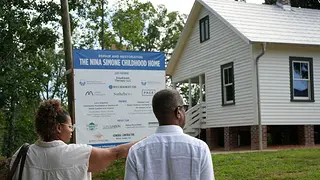
photo by: Morgan Forde
AACHAF Senior Director of Preservation Tiffany Tolbert (left) and Executive Director Brent Leggs (right) visiting the rehabilitated Nina Simone Childhood Home.
Nina Simone's childhood home has been faithfully restored using historically accurate and preserved sections of original materials, paint, and stain colors that reflect its appearance during Simone and her family’s time there in the mid 1930's. While it will not be reopened as a traditional house museum, furnished with her or her family’s belongings, the rehabilitation honors the period and materiality of the space. Instead, the Action Fund is working on the next phase of the project, working with the Tryon community, members of the Waymon family, and a network of interpretive planners to design innovative public programs to activate the space in the future.
"Preservation is an expression of what we choose to honor, and Nina Simone’s childhood home is an essential landmark in our nation’s artistic and cultural landscape,” said Brent Leggs, executive director of the African American Cultural Heritage Action Fund and strategic advisor to the CEO of the National Trust for Historic Preservation. “The restoration of her home affirms her rightful place in the American story—one defined by brilliance, resilience, and the power of art to shape our collective conscience.”
2. Ensuring history is accessible to everyone
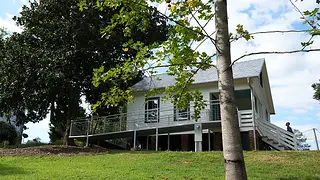
photo by: Morgan Forde
The ADA ramp leads from a parking area at the rear of the home and wraps around so visitors of all abilities can enter via the front door.
One of the most notable changes to the site is the installation of a preservation-compliant ADA ramp along the side and back of the house. Previously, there was no access to the home other than the steps leading to the front porch. The Action Fund team and the collective of artists who purchased the home wanted to make certain that Nina Simone's legacy would be tangible and accessible to everyone, in keeping with her own values of dignity and equality for all people.
The ramp will enable visitors of all abilities to access the front porch and enter the home just as her and her family once did. Additionally, it’s design ensures that if it is ever removed, the historic property’s essential form and integrity will remain intact.
3. Bringing climate innovation to preservation
.webp)
photo by: Morgan Forde
Interior view of the Nina Simone Childhood Home with original flooring and installation of minimally invasive ventilation and fire suppression systems.
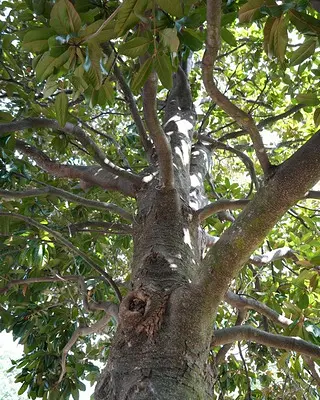
photo by: Morgan Forde
The magnolia tree nicknamed "Sweetie Mae" stands behind the home.
Bringing a nearly century-old building into 2025 came with several challenges. In addition to restoring the existing structure, mechanical systems for heating, cooling, electricity, and fire suppression all needed to be added in a way that didn't distract from the originality of the home.
The Action Fund worked with architectural and construction partners on the ground to implement a state of the art geothermal heating and cooling system, tapping deep underground beneath the house to draw in cool air or expel heat as needed to maintain a comfortable internal temperature. Fire suppression and electrical systems were hidden as seamlessly as possible throughout the interior, ensuring future visitors have a visually authentic experience of the space.
Finally, crews worked hard to preserve a nearly century-old magnolia tree at the rear of the house, fondly nicknamed "Sweetie Mae." The tree has stood on the property since Simone's childhood, and will continue to shade the home for years to come.
4. Inspiring the next generation of preservationists
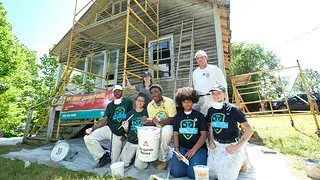
photo by: Nancy Pierce
Members of HOPE Crew on-site at the Nina Simone Childhood Home in 2019.
Some of the earliest preservation projects at the Nina Simone Childhood Home were completed by the National Trust's HOPE Crew, who helped bring its exterior back to life with a fresh coat of paint and other stabilization work before the main phase of rehabilitation began.
This project involved a diverse team of preservationists from the entry-level through seasoned craftspeople all working together to ensure the home was ethically preserved, materials were replicated faithfully where needed, and innovative systems could be used to ensure the site remains for generations to come.
5. Taking Nina Simone's legacy into the future
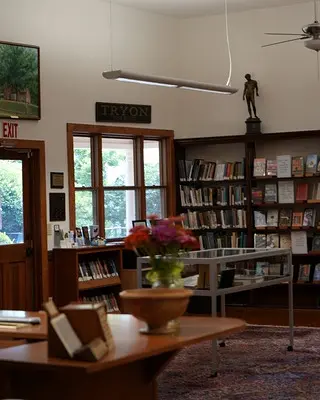
photo by: Morgan Forde
Tryon's Lanier Library, where Nina Simone gave one of her first piano recitals as a child.

photo by: Morgan Forde
Nina Simone's home is located in Tryon's historically Black East Side neighborhood.
Tryon, North Carolina and its historically Black East Side neighborhood are fundamental to Simone's childhood, where several other important sites including St. Luke CME Church, where her mother was a minister, and the Lanier Library, where she gave one of her first public recitals at the age of eleven.
The Nina Simone Childhood Home is not yet open to the public. The Action Fund is actively engaged with the Tryon and East Side communities to imagine a future for creative programming and ethical cultural heritage tourism at the home in the future, which will honor Simone's legacy, and celebrate the community that helped make her who she was.
Donate Today to Help Save the Places Where Our History Happened.
Donate to the National Trust for Historic Preservation today and you'll help preserve places that tell our stories, reflect our culture, and shape our shared American experience.

.webp)

